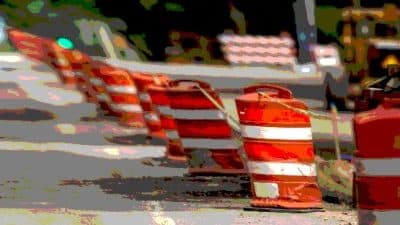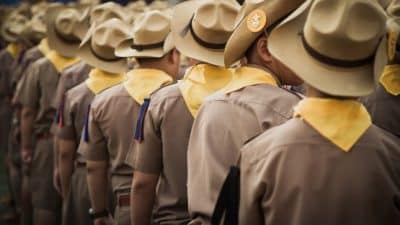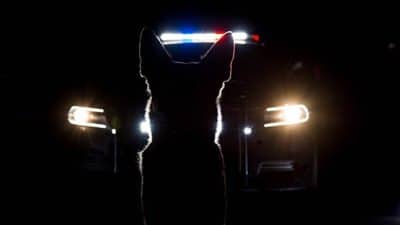
Goin’ north, the rush is on . . .”
– The late Johnny Horton (1960)
“Welcome to Alaska, the last foreign country still friendly to Americans.”
This sign greeted four wide-eyed travelers from the Lower 48 at the outset of a ten-day great Alaska pilgrimage. We were still grasping the reality of actually setting foot in America’s Last Frontier amidst celebrations of its 50th year of statehood.
Wife Anna and good friends since college days, Glenn and Kathy Zendt of Staunton, had spent hours together discussing and arranging this trek – including saving money for le grande adventure.
The impetus for the trip, apart from desiring a completely different vacation experience, was Bob and Betty Lou Buckwalter, also friends since college, who previously lived in a unique cedar shake-covered geodesic dome home in a “holler” in northwest Rockingham County. They followed several sons northward and wound up owners-managers of a bed and breakfast in the jumping-off point of the northern hemisphere, Tok, Alaska.
After flying to Anchorage and maneuvering through one of the cleanest – and least peopled – city airports I’ve ever seen (on the heels of our connecting flight in Atlanta), we point our rented Chevy Cobalt eastward for a long cruise on Alaska Rt. 1, Glenn Highway, from Anchorage to Tok.
The temperature as we drive hovers at 57 degrees in the middle of June. Off to the right is a glacier reaching ground level that one might expect to have thawed by this time of year. One unbelievable view after another strikes these first-time visitors to America’s 49th state; after awhile one almost starts to think, “Ho-hum, another snow-capped mountain peak stretching skyward,” with billowing clouds enveloping the summit.
The highway that begins as a four-lane suddenly becomes two lanes and without warning turns to gravel, the result of constant freezing and thawing. In the middle of nowhere, a momma moose and her baby skirt across in front of us. By the time we stop and grab our cameras, they had vanished into the bush. But, we encountered other moose (plural, meese?) along the way and managed to capture them grazing leisurely, seemingly detached, as we snapped away.
We drive for miles with one spectacular mountainous scene after another rising up to greet us. You want to wave and/or blow the horn when you finally see or pass another vehicle. At one point, I scan the radio dial and find nothing but static on the AM and FM dial. High above us, Dall sheep graze on perpendicular cliff sides. What keeps them from plummeting hundreds of feet to the ground? Super Glue on their hooves?
Arriving at Tok, we found Cleft in the Rock Bed and Breakfast to be a conglomerate of rustic cabins nestled in the pines. The facilities were bucolic at first blush but once inside, each structure was quite modern, tastefully appointed and included dish network television and Wi-Fi connections. The accommodations have a Triple-A rating, meaning they must meet high quality standards and in turn are promoted broadly.
Betty Lou’s breakfast was a buckle-buster with blueberry pancakes, scrambled eggs, homemade cinnamon rolls, orange juice and all the robust coffee one could imbibe. Other guests are from Germany and Ireland. This isn’t just a livelihood, I thought, it’s a remarkable ministry that speaks volumes to people from around the world.
The village of Tok (pop: 1,673) stands at the crossroads of Alaska’s two main highways and consists of several gift shops, motels, “Fast Eddie’s” restaurant (fine fare, we ate there) and several small businesses. The closest hospital is at Fairbanks, 200 miles distant. Tourism is obviously the main industry.
After two days of royal treatment, we bid the Buckwalters a reluctant farewell and drive from Tok to North Pole, nearly 200 miles, without seeing one commercial establishment or a single billboard. Every so often we’d find a rest stop that consisted of a gravel area and a fancy outhouse. If you didn’t fill up the car before departure, you traveled at your own risk. We stopped and touched the 789-mile-long Alaska pipeline on Richardson Highway (AK Rt. 2); at one stop we shelled out $3.64 for regular.
Most businesses, restaurants and hotels/lodges have about four months a year to make the money needed to survive the rest of the year. Temperatures drop by late September to the point that snow can start to fly. Even though places like Tok have an average yearly precipitation of 9 inches, temperatures can drop to -70 degrees. That, coupled to the extended daylight hours in summer and the long winter nights, would make a difficult adjustment for a fair-weather fiend like me.
The unparalleled scenery of Alaska stands in sharp contrast to many homes and occasional businesses dotting the rural landscape. A struggling economy is readily apparent, with some buildings sorely in need of maintenance and having little landscaping. Perhaps the general feeling is, why spend much time on lawn care with such a short growing season (even in the land of the midnight sun). At the same time, wildflowers grow in abundance – wild Alaska roses, Forget-Me Nots (the state flower), lupine and wild iris, along with scores of dazzling hanging baskets, thanks to long daylight hours and the mild temperatures.
The next several days passed all too quickly, with one fantastic experience after another – a trip down the Chena River on the “Discovery III” paddlewheel boat, soaking in the therapeutic water at the 100-plus-year-old Chena Hot Springs, seeing a mother grizzly and her cub in their natural habitat in the unspoiled Denali National Park (it was 31 degrees and snowing the day we visited), stopping for a picture by a weedy “welcome” sign in Wasilla (Gov. Palin didn’t come out to greet us; she must have been preparing her special announcement).
The 200-mile stretch of Alaska Rt. 3 (George Parks Highway) from Fairbanks back to Anchorage provided a continuous panorama of soaring mountain ranges on either side, with snow-capped peaks scraping the puffy clouds. We finally began resisting the urge to stop the car and take yet one more shot of the spectacular scenery. Alas, Mt. McKinley, the highest mountain in North America at 20,320 feet above sea level, was shrouded from view the entire trip.
I think God had a field day carving out Alaska and chuckled up his celestial sleeve that it took so long for people to discover its natural beauty or that it wasn’t until Jan. 3, 1959 that this territory – purchased for $7.2 million dollars from Russia in 1867 by Secretary of State William H. Seward and promptly dubbed “Seward’s Folly” – officially became our 49th state.
We return to Anchorage, and with two days left on our trip came another ambling adventure – a four-hour safari from Anchorage to Seward on the Alaskan Railway. Just when we thought the scenery couldn’t outdo itself, it has, and with someone else handling the controls, we are free to gawk and marvel at the grandeur spread out before us. We drive through areas similar to driving west on Rt. 33 through the Shenandoah Mountains, then suddenly the area opens up and water cascades down the mountainside while eagles soar overhead on immense wingspans.
I’m surprised that we’re allowed to move freely about our railcars and from one car to another. Moving up to the domed observation deck further expands our horizons and perspectives. Again, I have to discipline myself from taking more photos of the spectacular views on Mother Nature’s grand stage. The words of several hymns reverberate through my mind: “Oh Lord my God, when I in awesome wonder, consider all the works thy hands have made. …” (How Great Thou Art) as well as “In the rifted rock I’m resting.” We four Mennonites resist the urge to sing aloud in four-part a capella harmony in such an awe-inspiring setting.
All too soon, we’re winging our way back to ole Virginny on a packed Delta flight by way of Salt Lake City, expecting the Mormon Tabernacle Choir to serenade us when we deplane.
Back at work, it’s difficult to stay focused, using the four-hour time difference and 10 days of rejuvenating repose as excuses. This hiatus also reminds me that my work place can get along just fine without me, thank you, even though it took special effort to forget about everything going on back on campus and knowing what all awaits my return.
It’s been ten unforgettable days – long ones, to be sure, with 22 hours and 50 minutes of daylight – experiencing this special part of God’s majestic creation. Our horizons were broadened while being reminded that the larger world, for all its pain and injustice, is full of wonderful people and amazing things to see. It definitely is a special brand of people who call Alaska home year round. I think we are better persons for having been there.
But even after all this, I still must say, “There’s no place like Nome.”
PS: Even though what we saw and experienced defies description, I need another week to share anecdotes on a few of the remarkable people met and other encounters that couldn’t have been just “coincidence.” Come back next Saturday, won’t you?
– Column by Jim Bishop










